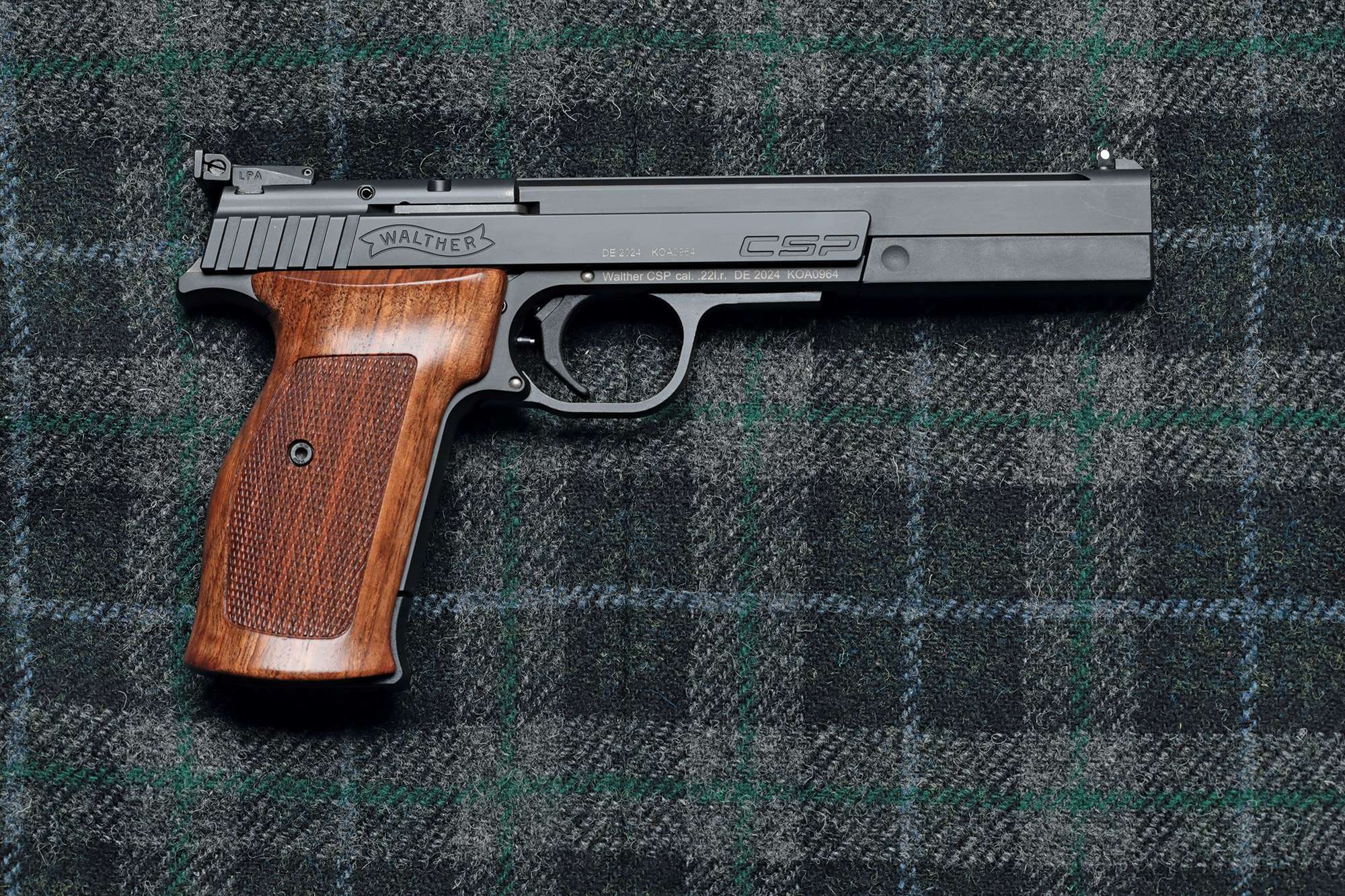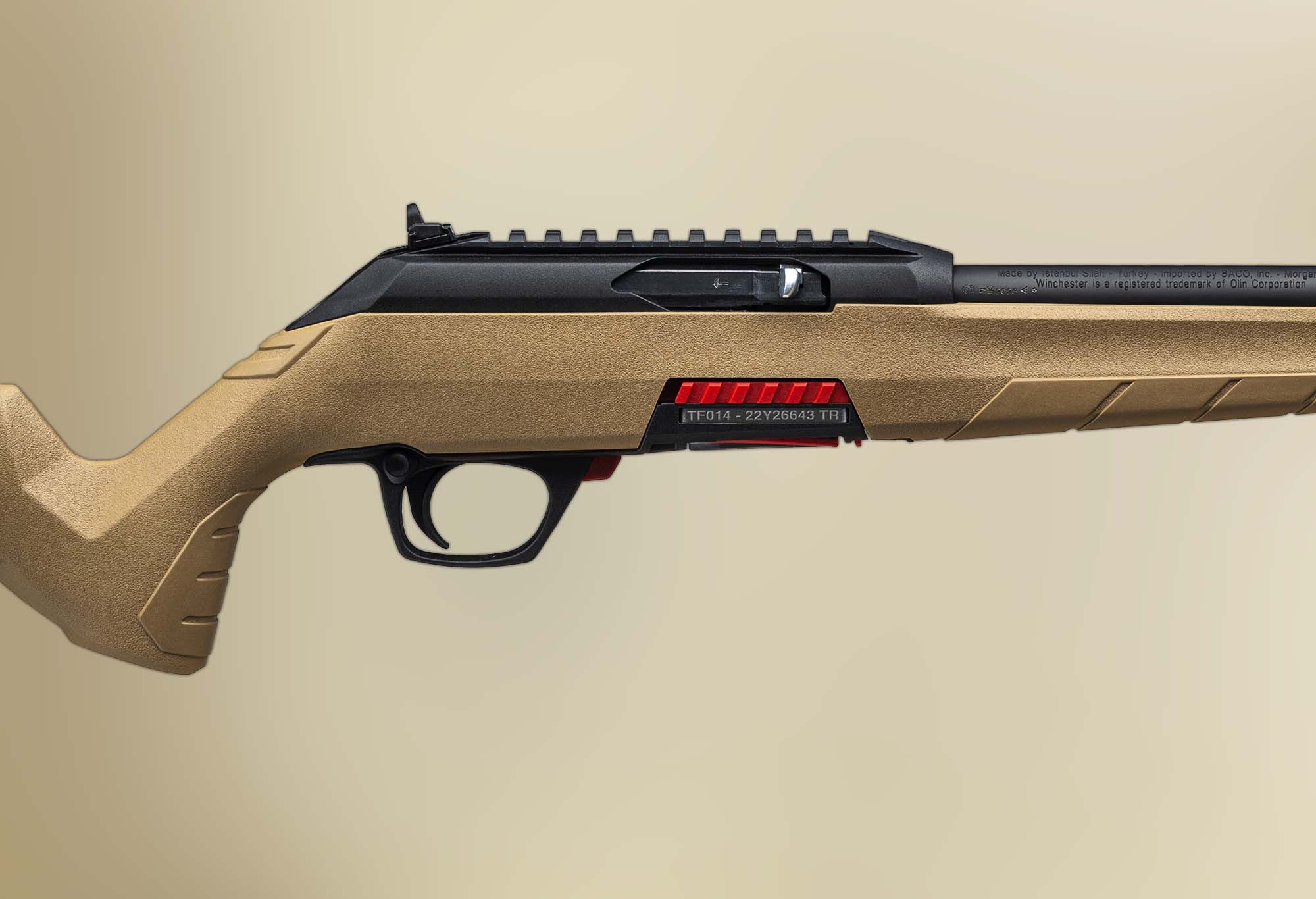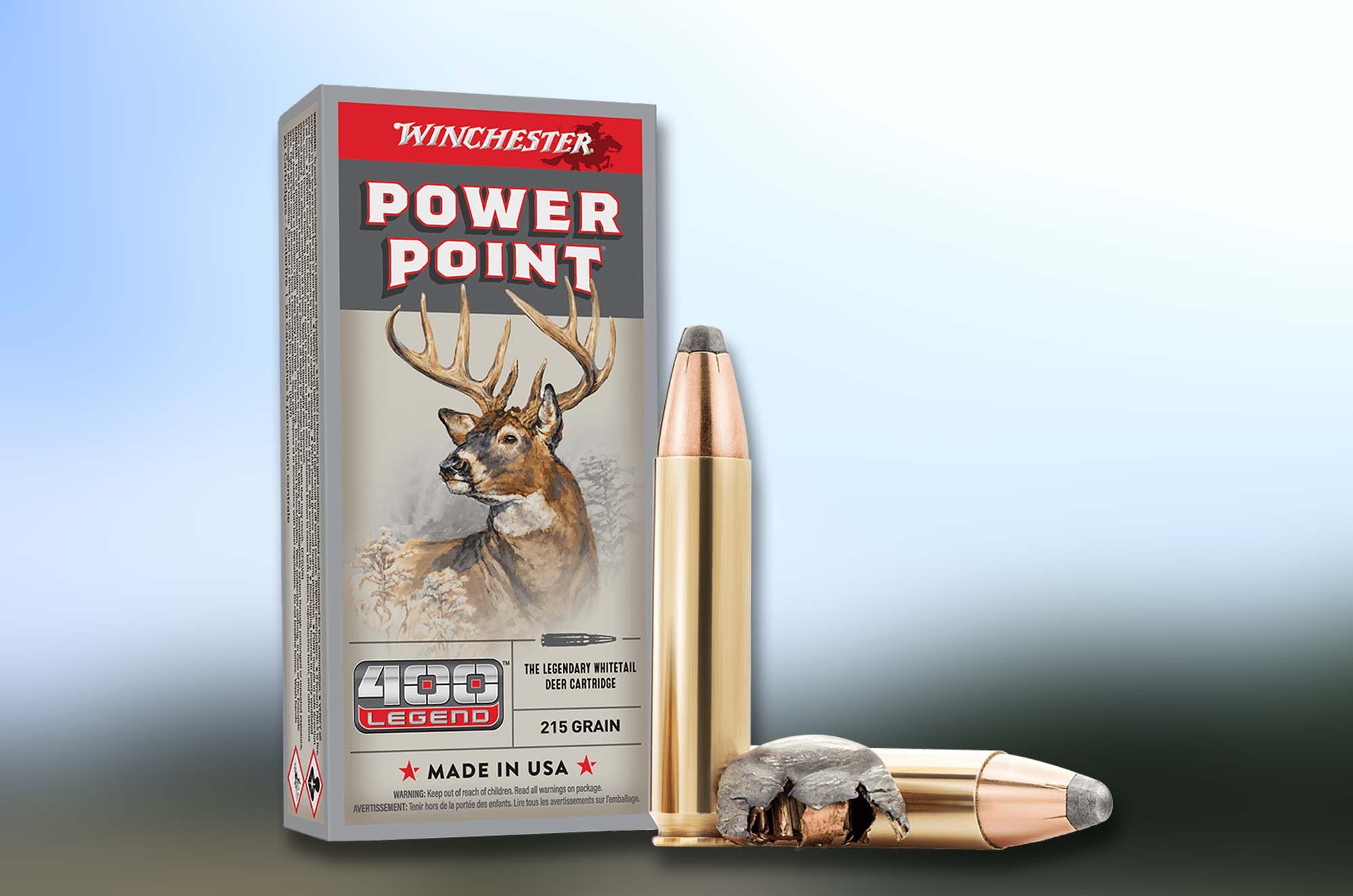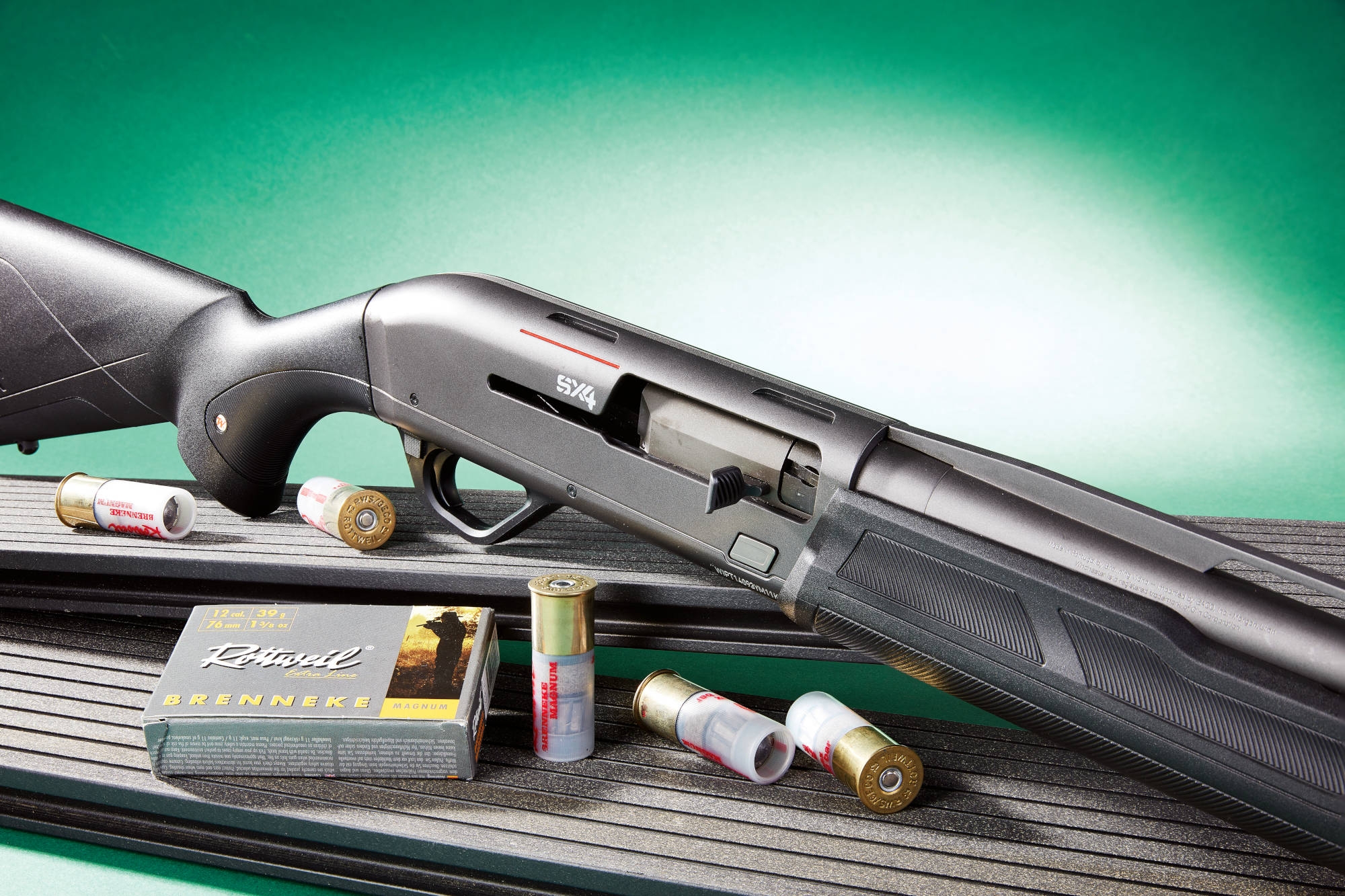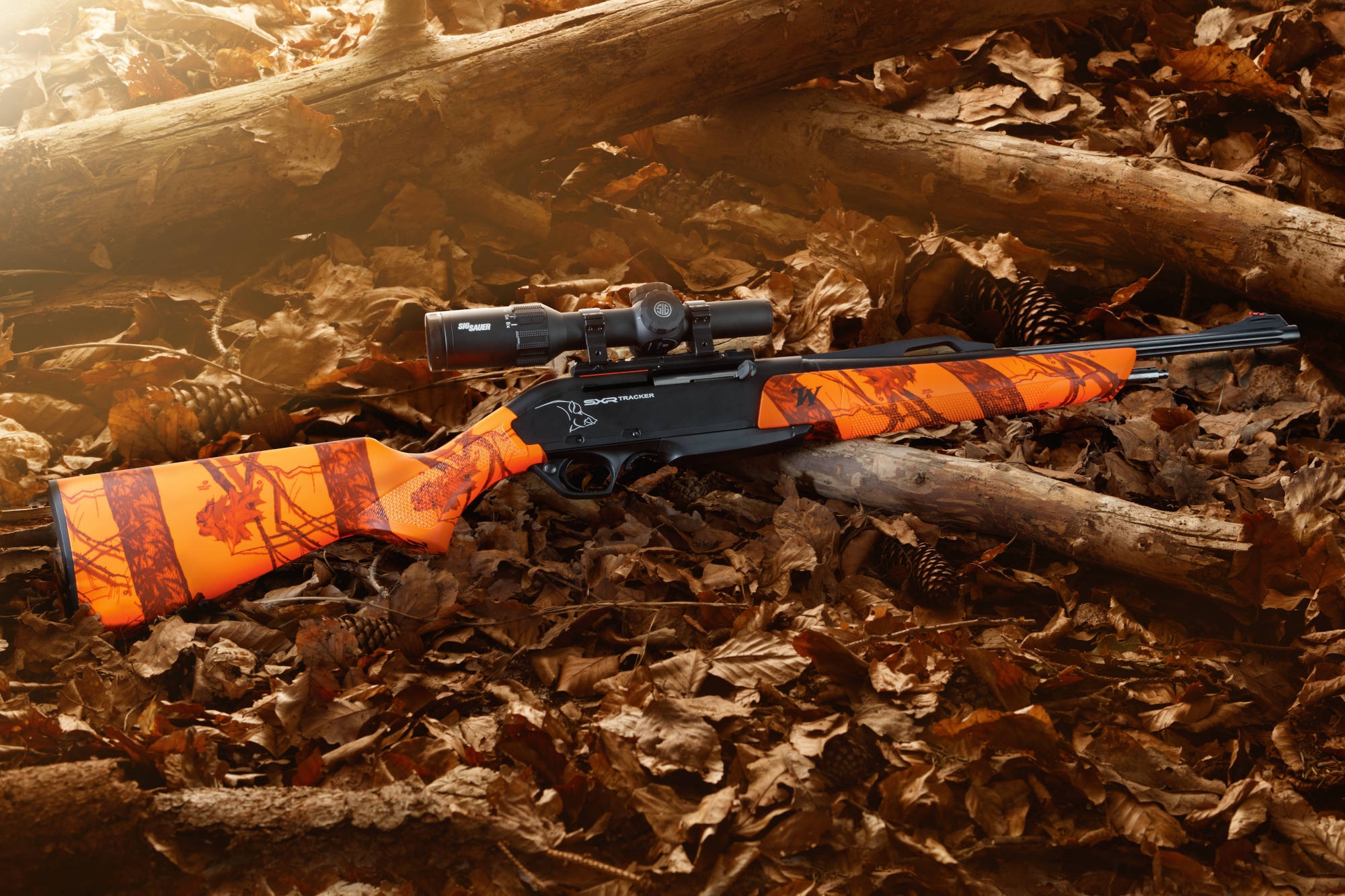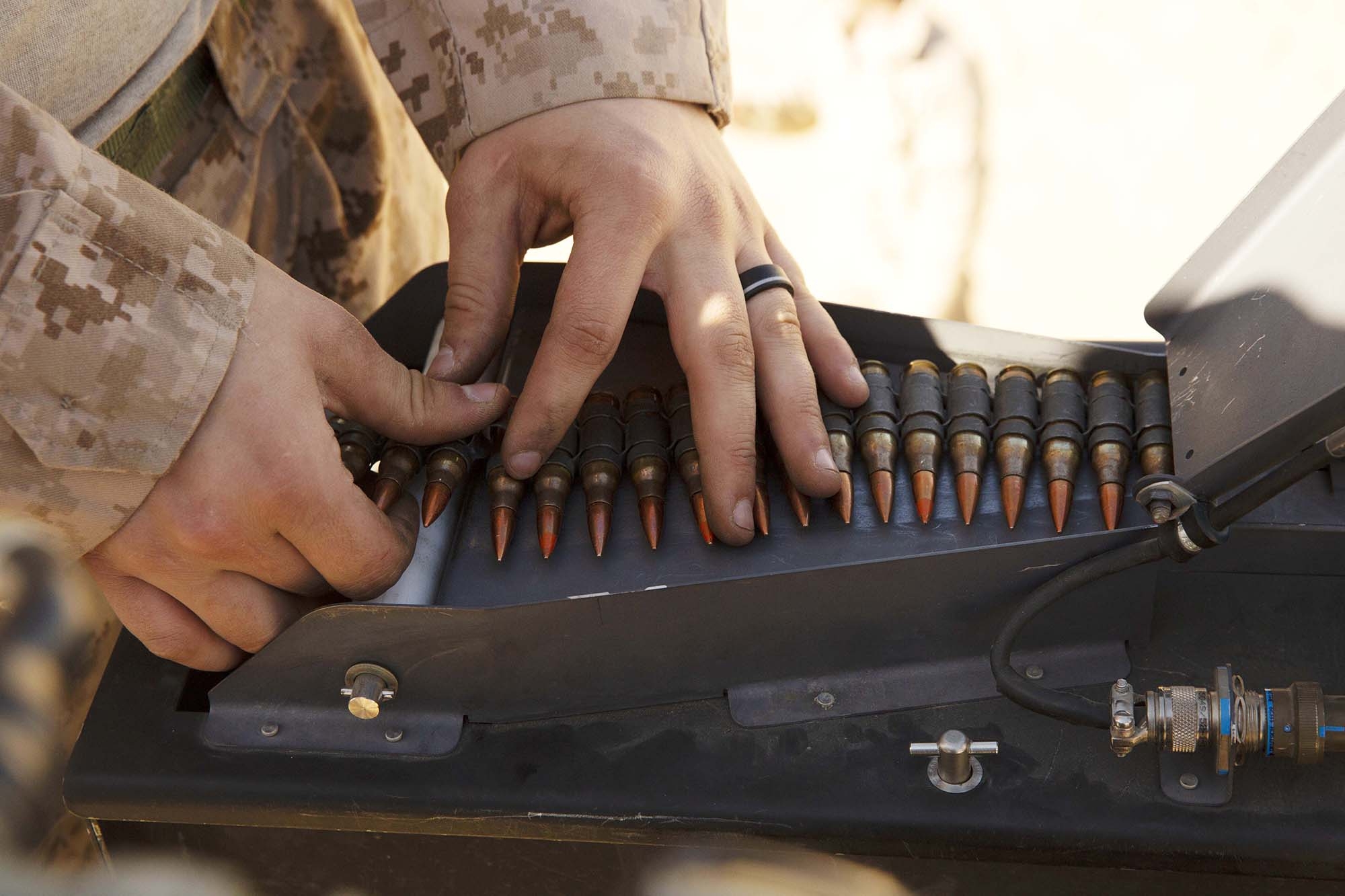At least at home, Winchester Repeating Arms from Morgan, Utah, offers the Wildcat and Xpert in countless configurations with different synthetic and wooden stocks and in two barrel lengths: 16.5" (420 mm) and 18.1" (460 mm). In addition to .22 Long Rifle, the Xpert bolt-action rifle is also available in .17 Winchester Super Magnum. Developed around 2012, the cartridge accelerates a 20 grs (1.3 g) 4.5 mm bullet to 910 m/s. We tested the two models with the shorter barrel.
Technical differences: the Winchester Wildcat and Xpert rifles in detail
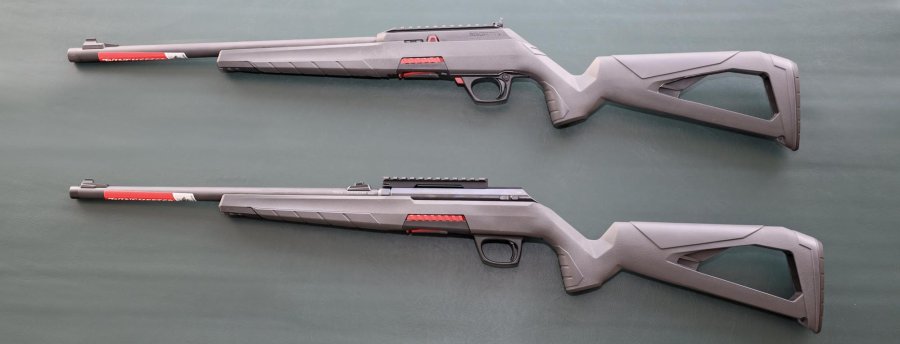
The Xpert bolt-action rifle is based on a steel receiver with a screwed-on aluminium optics mounting rail. The barrel with semi-match Bentz chamber and 1:16" twist is fixed to the receiver with a nut and has a diameter of 19 mm at the barrel root, tapering to 16 mm at the muzzle. The adjustable rear sight is covered by the Picatinny rail and can only be used as a back-up sight with the ramped post front sight, for which the Picatinny rail must be removed. At 330 mm, the sight radius is not exactly generous, which is negligible because most users will mount an optic anyway. The semi-automatic Wildcat, on the other hand, has a polymer receiver with an integral optic mounting rail. The barrel with 1:16" twist and continuous 18 mm diameter is locked in the action by a clamping screw. The Wildcat is fitted with an adjustable rear sight (Ghost Ring Sight) and a ramped post front sight. The barrels of both rifles are fitted with a ½"-20 UNF muzzle thread with a protector matching the barrel diameter. In the case of the autoloader, the lower receiver assembly including the trigger group can be removed from the stock as an encapsulated complete unit, which makes barrel cleaning with the cleaning rod pushed through from the rear extremely easy.
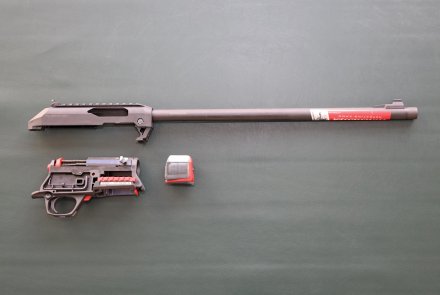
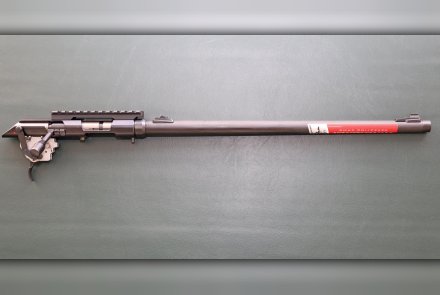
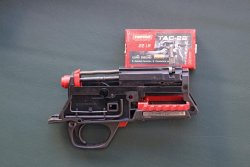
Winchester Xpert repeaters and Wildcat autoloaders: the trigger systems
The M.O.A. trigger group, which can be adjusted between a trigger pull weight of 1,200 and 1,800 g, is located under the receiver of the Xpert repeater and is factory-set to 1,400 g, which was confirmed by our measurements. Turning the adjustment screw clockwise increases the trigger pull weight. The safety acting directly on the trigger could not be operated silently.
The Wildcat comes with a striker-fired design and we measured the average trigger pull weight at around 2,400 g. The polymer safety, which acts directly on the trigger, could not be operated silently either. Even the trigger blade of the autoloader is made of polymer.
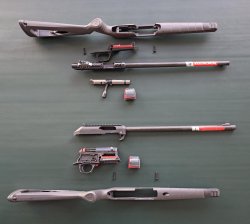
The stocks of the .22 Winchester Xpert and Wildcat rifles
At first glance, the stocks of the Xpert and Wildcat with pistol grip and skeletonised buttstock look like identical twins, but due to the different action mounts there is no interchangeability and the stock of the bolt-action rifle is cut slightly deeper in the bolt shroud area. The action is held in the stock with two screws. A short Picatinny rail is attached to the fore-end for the use of a bipod. For the use of a sling, the stocks have integral interfaces in front of the short Picatinny rail and on the buttstock. The rotary magazines, which are compatible with the legendary Ruger 10/22 magazine, have a capacity of ten cartridges, sit flush with the stock. All 10/22-type magazines available on the market can be used for the Winchester rimfire rifles.
The magazine can be released either by pressing a button in front of the magazine or via the controls in signal red on both sides.
On the shooting range: the Winchester Wildcat and Winchester Xpert in practice
We equipped the two Winchester rifles alternately with the new Vortex Venom 3-15x44 riflescope with 34-mm main tube diameter, reticle in the first focal plane and a choice of MOA or MRAD click adjustment (€599) for the accuracy check. For this, we used 15 types of ammunition on the 50-m range. Surprisingly, despite the significantly higher trigger pull weight, the autoloader shot slightly better with an average of 26 mm than the repeater with an average of 29 mm.
Unfortunately, the two rifles did not harmonise so well with the inexpensive cartridges.
Winchester Xpert and Wildcat rifles technical specifications
| Model: | Winchester Xpert Composite | Winchester Wildcat |
Action: | Bolt-action | Blow-back semi-automatic |
| Calibre: | .22 LR | .22 LR |
| Magazine Capacity: | 10 rounds (10/22 rotary magazine) | |
Barrel: | 16.5"/420 mm long, 16 mm diameter at the muzzle, 1:16" twist,1/2x20 UNF muzzle thread with protector | |
Sighs: | Rear sight with ramped post front sight | Ghost ring sight with ramped post front sight |
Trigger: | Adjustable M.O.A. Trigger, trigger pull weight: 1,420 g | Drop out trigger unit, trigger pull weight: 2,406 g |
Safety: | Two-position safety catch acting on the trigger | |
| Stock: | Polymer with covered Picatinny rail at the front | |
Overall Length: | 880 mm | 885 mm |
Weight: | 2.0 kg | 1.7 kg |
| Price (MSRP in the US) | $329.99 | $279.99 |
Winchester Xpert and Wildcat rimfire rifles, accuracy and fun
Both of the lightweight guns from Winchester Repeating Arms provide solid accuracy and were designed to offer the shooter the greatest possible fun factor. At an affordable price in the US of $329.99 for the Xpert and $279.99 for the Wildcat, this is a very fair deal considering what they offer.
Further information on the two rimfire rifles can be found on the Winchester website.



